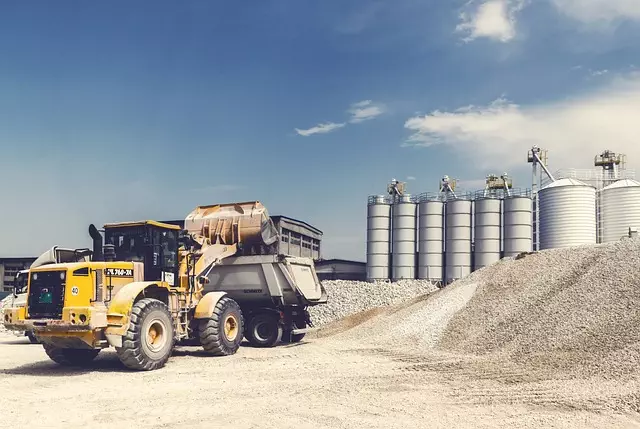Industrial hygiene standards serve as global guidelines for identifying and managing workplace risks, ensuring safe conditions worldwide. Each country has unique regulations influenced by cultural, economic, and historical factors. Hazard recognition and assessment, along with exposure monitoring, are crucial practices. International collaborations through organizations like ISO and WHO promote standardized methods, bridging regulatory gaps and fostering safer global work environments. Variations in hazard identification and management exist due to differing regulatory frameworks, requiring businesses to adapt safety protocols for compliance across borders. Effective communication and standardization are key to harmonizing industrial hygiene practices worldwide, benefiting occupational health outcomes.
In today’s globalized world, understanding international standards is crucial for ensuring worker safety and health across borders. This article delves into the complexities of industrial hygiene, exploring key aspects such as hazard recognition and assessment protocols, exposure monitoring techniques, and regulatory frameworks. By comparing practices from different countries, we identify best practices and challenges in international standardization, highlighting the importance of harmonized approaches to protect workers globally.
- Understanding Industrial Hygiene Standards Globally
- Hazard Recognition and Assessment Protocols Across Borders
- Exposure Monitoring Techniques in Different Countries
- Comparison of Regulatory Frameworks for Worker Safety
- Best Practices and Challenges in International Standardization
Understanding Industrial Hygiene Standards Globally
Industrial hygiene standards play a pivotal role in ensuring safe working conditions worldwide. These standards guide organizations on identifying and managing risks associated with various workplace hazards. Understanding these global norms is essential, especially for multinational companies operating across different regions. Each country has its own set of regulations and guidelines, often influenced by cultural, economic, and historical factors.
The process of hazard recognition and assessment forms the foundation of industrial hygiene practices. It involves systematically identifying potential risks within a workplace and evaluating their severity and likelihood. Exposure monitoring is another critical aspect, where measurements are taken to determine worker exposure levels to various hazards. By adhering to international standards, organizations can ensure they meet or exceed regulatory requirements, ultimately fostering a healthier and more productive work environment for employees globally.
Hazard Recognition and Assessment Protocols Across Borders
In the global landscape of industrial hygiene, consistent hazard recognition and assessment protocols are essential to ensure worker safety across borders. Despite international efforts to standardize safety practices, variations in regulatory frameworks and cultural differences can lead to disparities in how hazards are identified and managed. For instance, what constitutes a significant exposure level to a chemical substance might differ between countries, impacting the threshold values used for risk evaluation. Standardized methods for hazard recognition, such as integrating data from exposure monitoring and observational studies, offer a robust approach to bridging these gaps.
International collaborations play a pivotal role in harmonizing industrial hygiene practices. Organizations like the International Organization for Standardization (ISO) and the World Health Organization (WHO) provide guidelines and recommendations that promote uniform hazard assessment techniques. Adopting these protocols enables comparability of risk assessments, facilitates knowledge sharing among nations, and ultimately contributes to a safer global workforce, especially in multinational corporations operating across diverse jurisdictions.
Exposure Monitoring Techniques in Different Countries
In the realm of industrial hygiene, exposure monitoring plays a pivotal role in hazard recognition and assessment across different countries. Each nation adopts unique techniques and standards to ensure worker safety. For instance, Europe leverages advanced sensors and real-time data analytics to monitor air quality and chemical exposures, aligning with its stringent health and safety regulations. Conversely, the United States emphasizes sampling methods and personal protective equipment (PPE), as evidenced by OSHA’s (Occupational Safety and Health Administration) comprehensive guidelines.
These variations highlight the diverse approaches to exposure monitoring. Some countries prioritize laboratory-based analysis for detailed chemical identification, while others focus on rapid, on-site testing. Additionally, digital technologies like mobile apps and IoT (Internet of Things) devices are increasingly integrated into exposure monitoring systems worldwide, offering more efficient and comprehensive industrial hygiene practices.
Comparison of Regulatory Frameworks for Worker Safety
In the global landscape of industry, comparing regulatory frameworks for worker safety is a complex yet essential task. Each country establishes its own set of rules and standards to protect employees, often influenced by cultural, economic, and historical factors. These variations create a diverse spectrum of protective measures, from stringent regulations with comprehensive guidelines on industrial hygiene and hazard recognition and assessment to more relaxed approaches that leave exposure monitoring as a company’s internal concern.
The differences in regulatory oversight can significantly impact the day-to-day operations of multinational corporations and small businesses alike. Companies operating internationally must navigate through these varying standards, ensuring compliance where necessary while adapting their safety protocols to local requirements. Effective comparison and understanding of these frameworks are crucial for maintaining high safety standards globally and fostering an environment where worker health is a top priority across borders.
Best Practices and Challenges in International Standardization
In the realm of international standardization, especially within industrial hygiene practices, best practices serve as a beacon for ensuring worker safety across diverse global environments. Organizations like the International Organization for Standardization (ISO) play a pivotal role in developing and promoting guidelines that encompass hazard recognition and assessment methodologies. These standards are designed to help businesses identify and evaluate potential risks associated with various industrial processes and products. By implementing robust systems for exposure monitoring, companies can track and mitigate hazards effectively, contributing to improved occupational health outcomes.
However, navigating international standardization presents its own set of challenges. Different countries have unique cultural, legal, and regulatory landscapes that influence the adoption and interpretation of standards. For instance, varying approaches to risk assessment and acceptable exposure limits necessitate flexibility in implementing best practices. Harmonizing these disparities is crucial for fostering global cooperation and ensuring consistent industrial hygiene standards. Effective communication, collaboration between stakeholders, and adaptability are key strategies to overcome these challenges, ultimately enhancing worker safety on an international scale.


